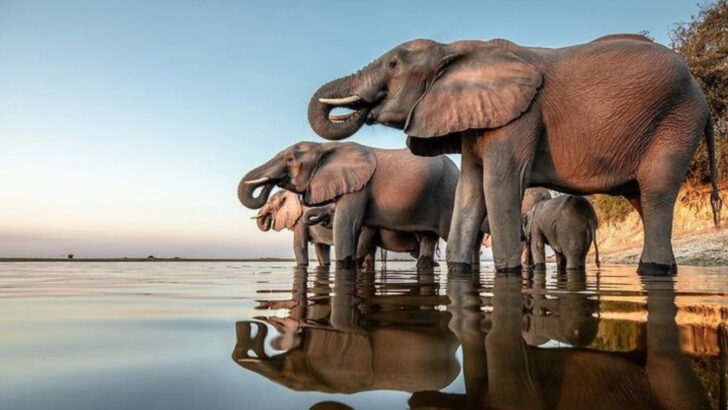Some places are so wild, so alive, they’ll make your camera shake with excitement. We’re talking grizzlies mid-salmon snatch, flamingos painting lakes pink, jaguars slinking through shadows—and you, right there, lens in hand, heart racing. These aren’t your average park strolls. These are the places where photographers cry happy tears, where the light hits just right, and the wildlife doesn’t wait for you to adjust your settings. If nature had a red carpet, these 18 spots would be the VIP entrance.
Serengeti National Park, Tanzania
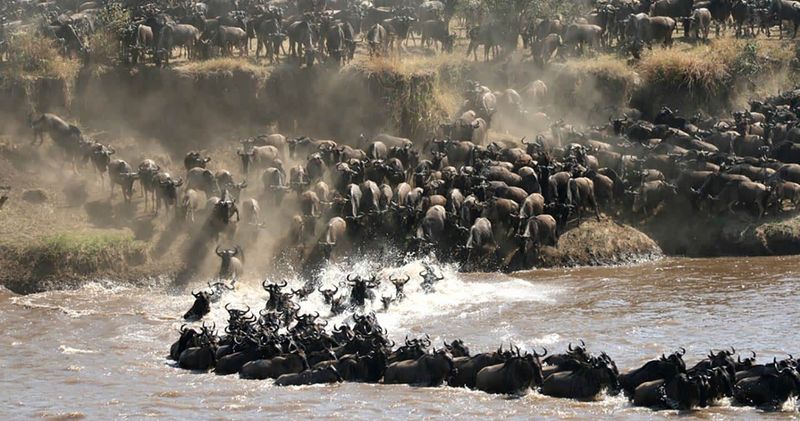
Imagine standing amidst one of the most spectacular wildlife events on the planet: the Great Migration. Serengeti National Park allows photographers to capture mesmerizing scenes of millions of wildebeests, zebras, and gazelles traversing its plains.
The sheer enormity of this migration is awe-inspiring, offering a dramatic backdrop for breathtaking photographs. Beyond the migration, Serengeti’s resident lions, elephants, and giraffes provide endless photographic opportunities.
Did you know? Serengeti means “Endless Plains” in Maasai, aptly describing its sweeping vistas. This park is a must-visit for any wildlife photographer.
Galápagos Islands, Ecuador
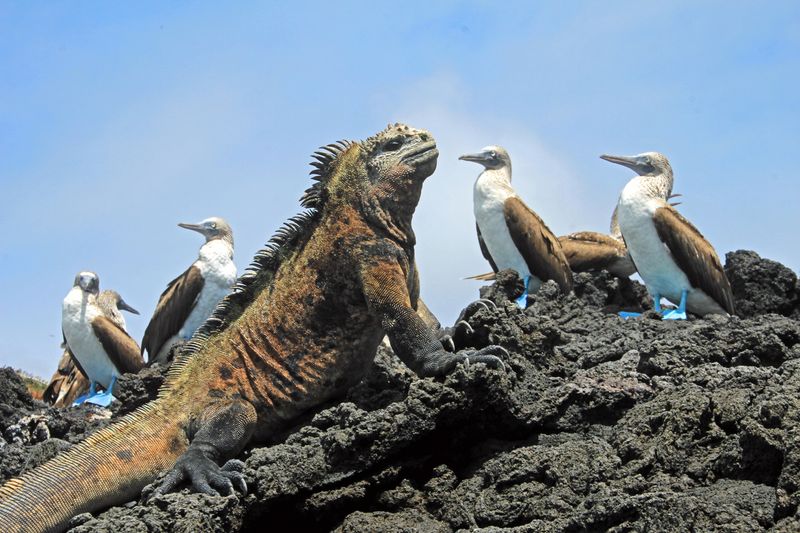
The Galápagos Islands, a living laboratory of evolution, offers photographers intimate encounters with wildlife found nowhere else on Earth. From the gentle lumbering of the giant tortoises to the curious glances of marine iguanas, each frame tells a unique story.
The islands provide a striking contrast of volcanic landscapes and vibrant wildlife. With creatures that show no fear of humans, capturing close-up shots becomes an exciting reality.
Fun fact: Charles Darwin’s visit to the Galápagos in 1835 inspired his groundbreaking theory of natural selection. This archipelago continues to enchant those behind the lens.
Yellowstone National Park, USA
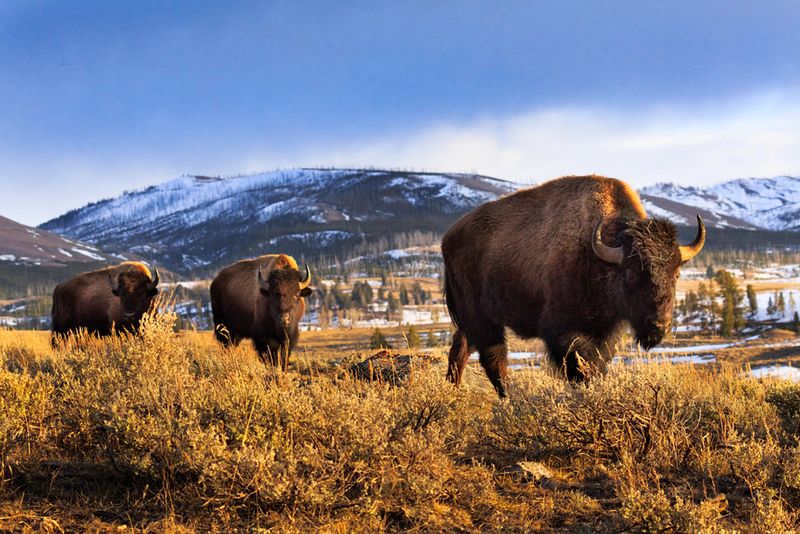
Yellowstone National Park is a place where the earth’s geothermal wonders meet diverse wildlife. From the iconic bison grazing against a backdrop of geysers to elusive wolves wandering through snow-laden forests, it’s a photographer’s paradise.
The park’s steaming hot springs and vast forests offer varied scenery for capturing dynamic images.
Did you know? Yellowstone was established in 1872 as the first national park in the world, setting the standard for conservation areas globally. Its blend of wildlife and natural wonders makes it a must-photograph location.
Pantanal, Brazil

The Pantanal, the world’s largest tropical wetland, teems with an incredible variety of wildlife. Photographers flock here to capture its legendary jaguars, who often roam the banks of its many rivers.
Apart from these magnificent cats, the Pantanal’s waterways host capybaras, giant otters, and a multitude of bird species. The wetland’s shifting seasons present ever-changing photographic scenes.
Intriguingly, the Pantanal covers parts of Brazil, Bolivia, and Paraguay, making it a truly international treasure. Its rich biodiversity calls to photographers seeking raw beauty and thrilling adventures.
Antarctica
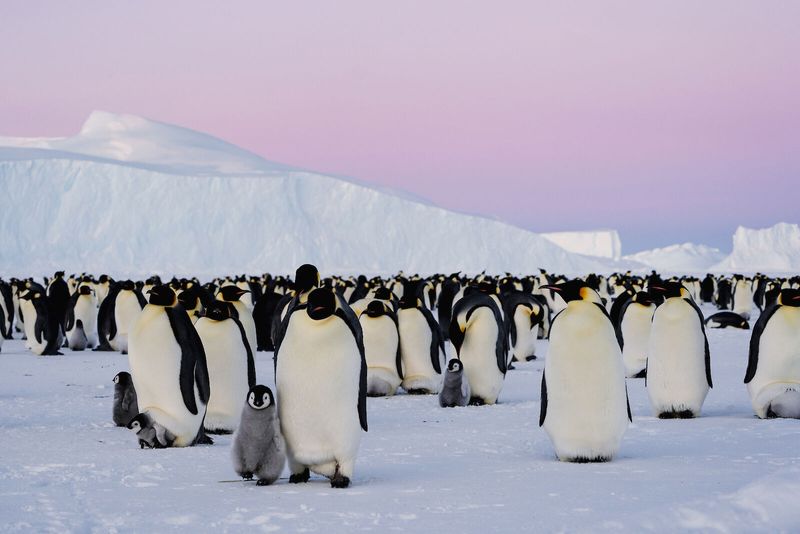
Antarctica, the frozen continent, offers unparalleled wildlife photography opportunities amidst its icy wilderness. The sight of emperor penguins huddling against the frigid winds is a spectacular experience for anyone with a camera.
The continent’s pristine environment provides a stark, beautiful backdrop for photographing seals, whales, and myriad seabirds.
Interestingly, Antarctica is the only continent without a native human population, preserving its untamed allure. For photographers aiming to capture nature at its purest, Antarctica promises extremes in both beauty and challenge.
Borneo, Malaysia and Indonesia
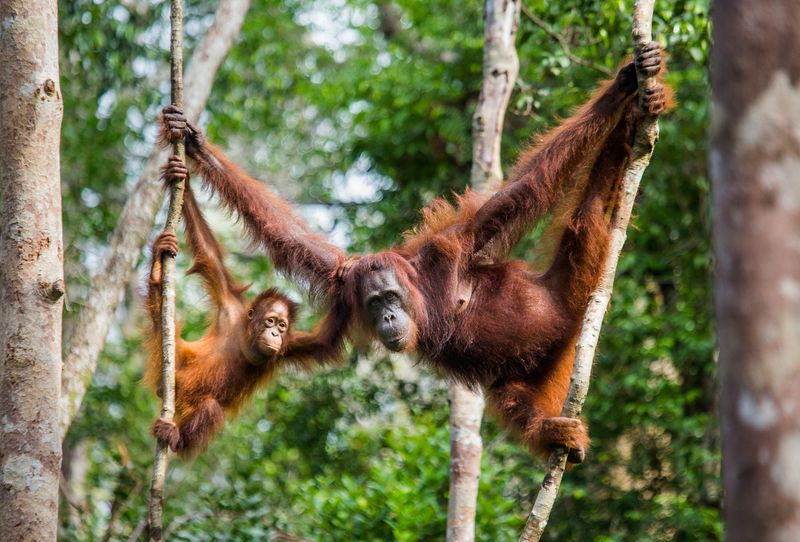
In Borneo’s lush rainforests, the call of the wild is ever-present. This biodiverse haven is home to the endangered orangutan, making it a top destination for wildlife photographers.
The island’s dense foliage and unique species, like pygmy elephants and proboscis monkeys, create a vibrant canvas for dynamic images. Each shot captures the essence of life in one of the world’s oldest rainforests.
Borneo spans both Malaysia and Indonesia, offering diverse travel experiences. The opportunity to photograph such extraordinary wildlife amidst towering trees is irresistible to any nature enthusiast.
Okavango Delta, Botswana
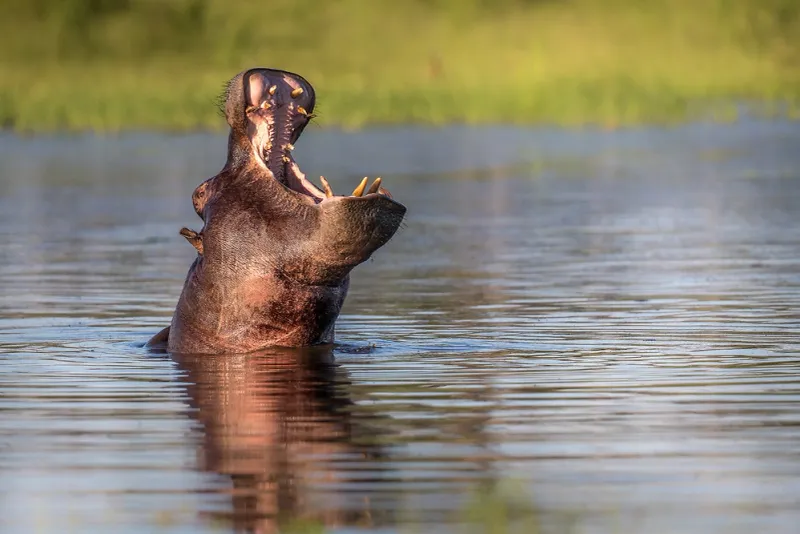
The Okavango Delta stands as a unique wildlife haven where water meets the wild. This inland delta’s flooded plains attract a plethora of animals, including elephants, hippos, and crocodiles.
Photographers are drawn to its tranquil waters and the spectacle of wildlife thriving in such a lush, watery landscape. It’s a place where the interaction between wildlife and water creates unforgettable photographic moments.
Did you know? The Okavango Delta is one of the Seven Natural Wonders of Africa. Its seasonal floods create a dynamic ecosystem, offering photographers new scenes with each visit.
Kruger National Park, South Africa
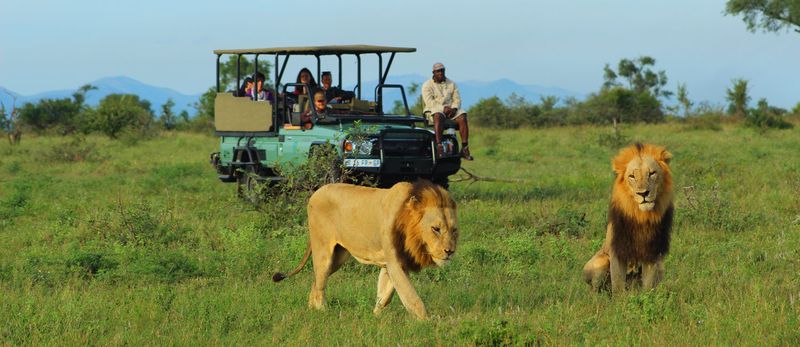
Kruger National Park, known for its rich diversity of life, is an iconic destination for wildlife photographers. From the stealthy leopard to the majestic elephant, its landscapes are filled with the Big Five.
The park’s extensive network of roads provides access to diverse habitats, perfect for capturing everything from intimate animal portraits to sweeping vistas.
Kruger’s conservation efforts have made it a refuge for many endangered species. This park not only offers endless photographic opportunities but also a chance to witness successful wildlife preservation firsthand.
Tigers of Ranthambore, India
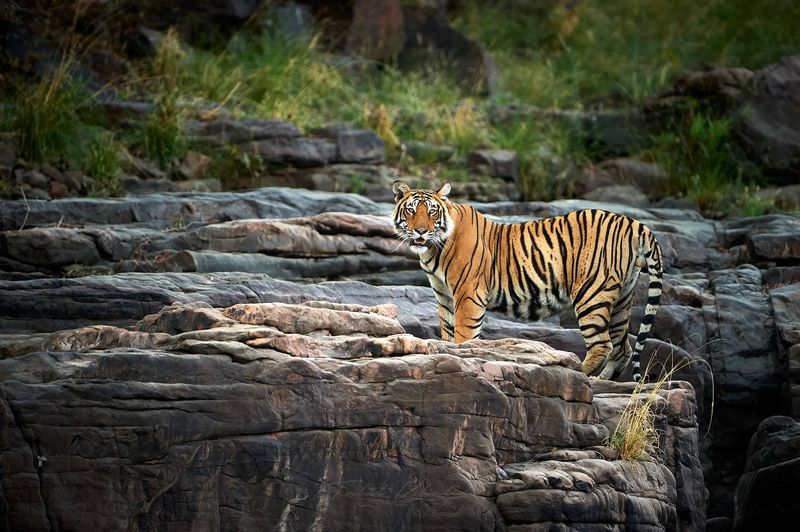
Ranthambore National Park, with its ancient ruins and sprawling landscapes, creates a dramatic setting for photographing India’s majestic tigers.
The juxtaposition of wild cats against historical fortresses adds depth to every shot. This park is a treasure trove for photographers eager to capture the regal beauty of tigers in their natural habitat.
Fun fact: Once a private hunting ground for the Maharajas of Jaipur, Ranthambore now plays a crucial role in tiger conservation. Photographers here help document the ongoing efforts to preserve these magnificent creatures.
Sundarbans, India and Bangladesh
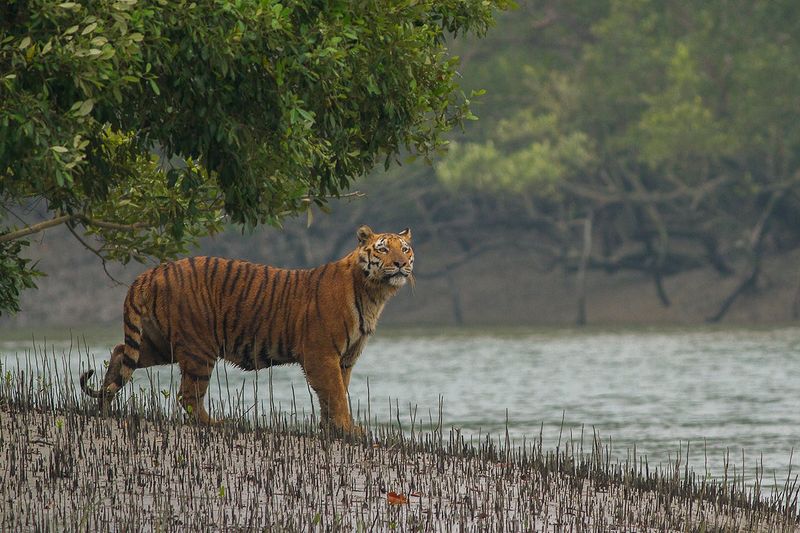
The Sundarbans, a UNESCO World Heritage Site, is the world’s largest mangrove forest and home to the elusive Bengal tiger. Its labyrinth of waterways and dense foliage make for challenging yet rewarding photography.
Capturing a glimpse of the Sundarbans’ tigers requires patience and a keen eye, as their camouflage is adapted to the dappled light of the mangroves.
Intriguingly, the Sundarbans spans both India and Bangladesh, making it a cross-border treasure for wildlife enthusiasts. The forest’s biodiversity extends beyond tigers, offering captivating shots of crocodiles, dolphins, and numerous bird species.
Masai Mara, Kenya
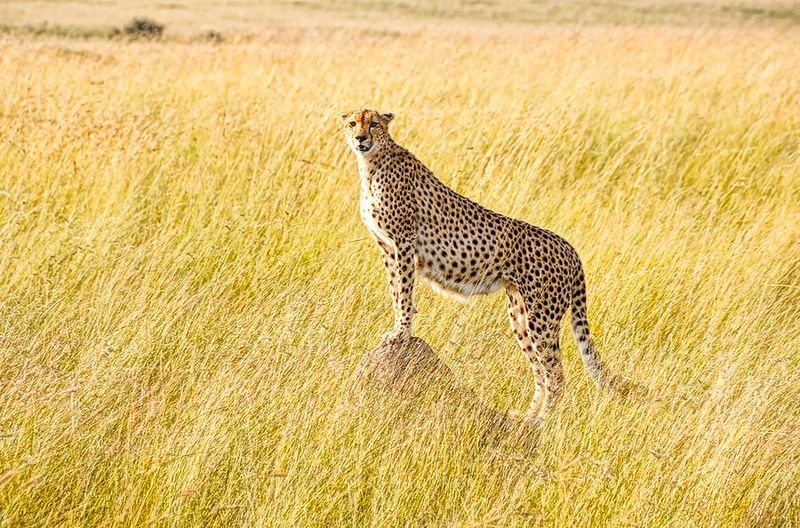
In the Masai Mara, the golden plains stretch far and wide, offering a canvas rich with wildlife possibilities. Cheetahs perched atop termite mounds surveying the land are a sight to behold.
The annual wildebeest migration, crossing into the Mara from the Serengeti, creates one of nature’s grandest spectacles, perfect for capturing action-packed frames.
Did you know? Masai Mara was named in honor of the Maasai people, its ancestral inhabitants. The park’s abundant wildlife and scenic landscapes make it a dream destination for photographers worldwide.
Madagascar
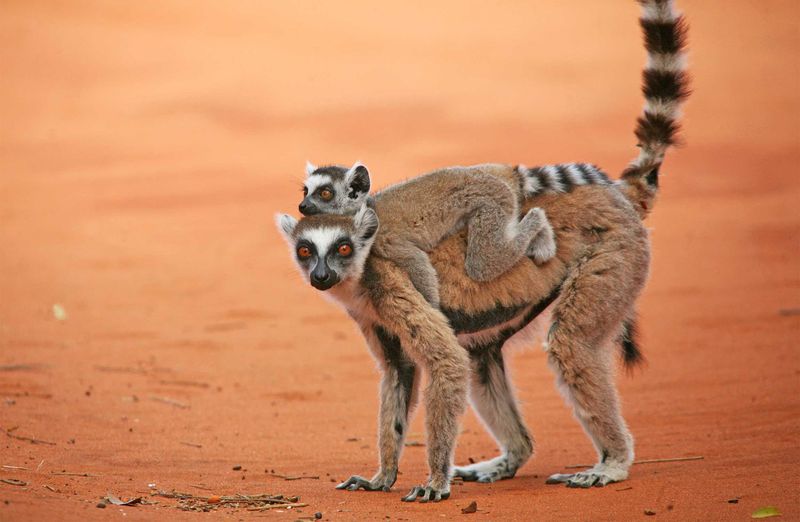
Madagascar, an island of wonder, offers photographers a chance to capture species found nowhere else on Earth. From the playful lemurs to the towering baobab trees, each photograph is a window into a unique ecosystem.
The island’s diverse habitats, including rainforests and deserts, provide varied and vibrant backdrops. Every visit uncovers new surprises and endless photographic opportunities.
Fun fact: Over 90% of Madagascar’s wildlife is endemic, meaning it can’t be found anywhere else. This exclusivity makes it a coveted hotspot for wildlife photographers seeking the rare and extraordinary.
Chobe National Park, Botswana
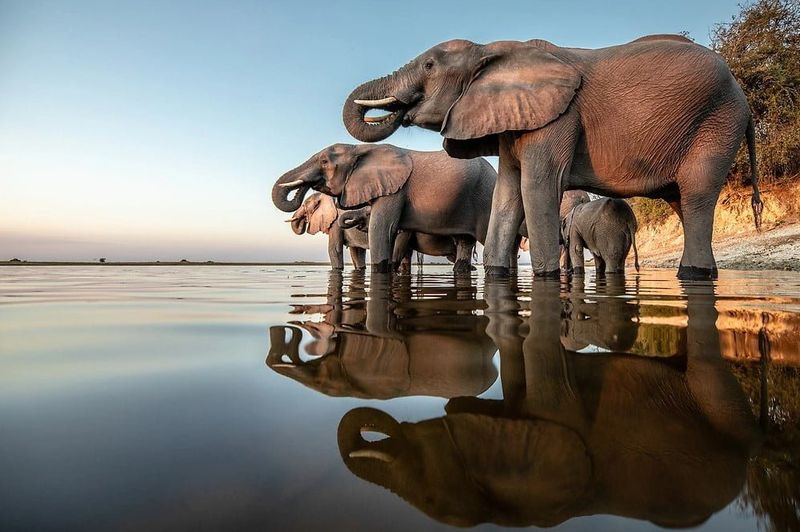
Chobe National Park, renowned for its large elephant herds, offers photographers incredible scenes of these majestic animals congregating by the river.
The golden light of sunrise and sunset paints the landscape, enhancing the magic of each photograph. Beyond elephants, the park’s diverse habitats host a variety of species, including lions and buffalo.
The Chobe River is a lifeline, attracting animals to its shores, creating dynamic photo opportunities. Chobe’s vibrant ecosystem and spectacular wildlife gatherings make it a must-visit for photographers seeking iconic African landscapes.
Great Barrier Reef, Australia
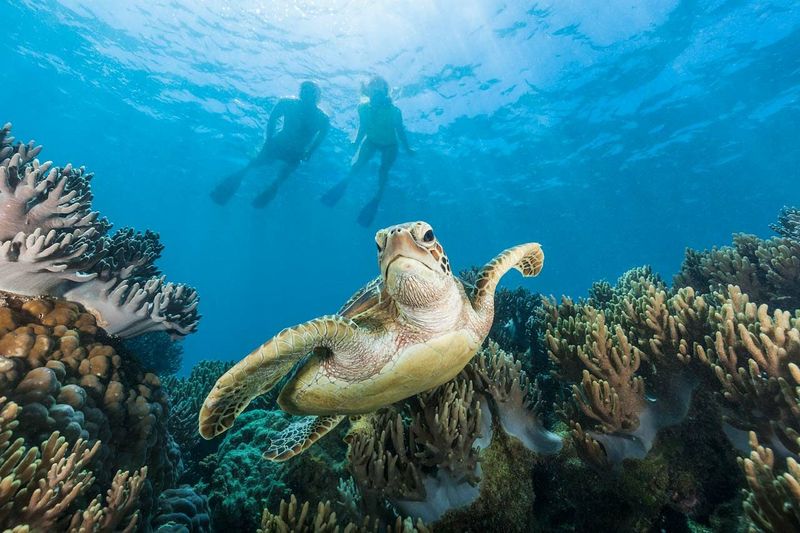
The Great Barrier Reef, a marine marvel, enthralls underwater photographers with its vivid coral gardens and diverse sea life. From the graceful glide of sea turtles to the playful dance of clownfish, every shot is a splash of color.
Photographers dive into a world teeming with life, capturing the intricate beauty of coral formations and the creatures that inhabit them.
Fun fact: The Great Barrier Reef is the largest coral reef system in the world, visible even from space. Its underwater wonders provide endless inspiration for those with a camera and a scuba tank.
Costa Rica’s Cloud Forests
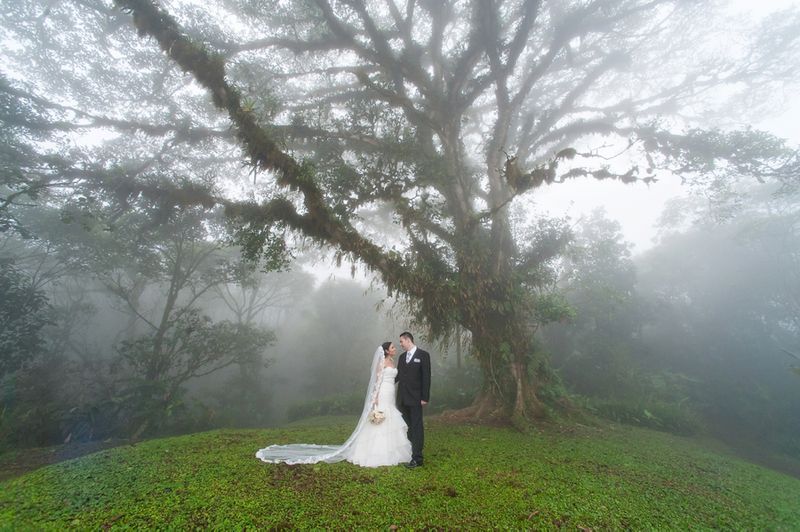
Costa Rica’s cloud forests, shrouded in mist, are a paradise for nature photographers. Home to the resplendent quetzal and a myriad of other bird species, these forests offer a mystical setting for capturing rare wildlife.
The perpetual clouds create a dramatic atmosphere, making every photograph feel like a journey into a hidden world. The vibrant flora adds depth and color to the scenes.
These biodiverse forests are crucial for conservation, housing an abundance of unique species. Photographers visiting Costa Rica will find endless inspiration among its mystical, fog-laden landscapes.
Amazon Rainforest, Brazil
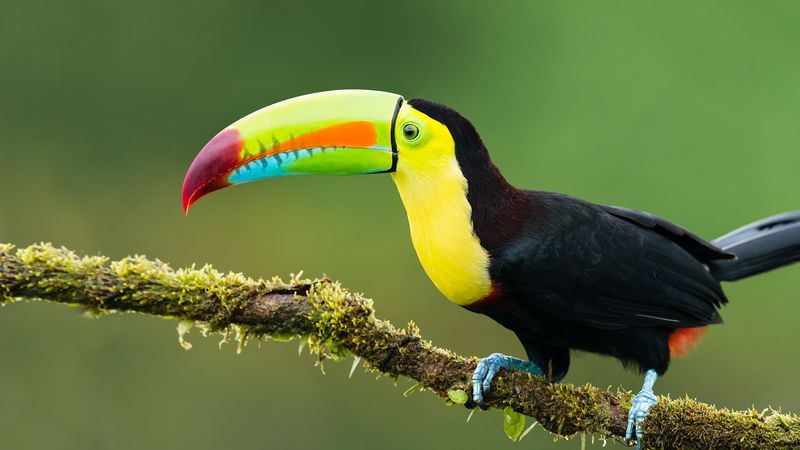
The Amazon Rainforest, a living tapestry of life, is a top destination for wildlife photographers. Its dense canopy shelters an astonishing variety of creatures, from brightly colored macaws to stealthy jaguars.
The challenge of photographing in such a rich and dense environment adds to the thrill. Each image captures the essence of one of the planet’s most vital ecosystems.
Did you know? The Amazon is often called the “lungs of the Earth,” producing 20% of the world’s oxygen. Its vast biodiversity is a treasure trove for photographers eager to explore and document its wonders.
Etosha National Park, Namibia
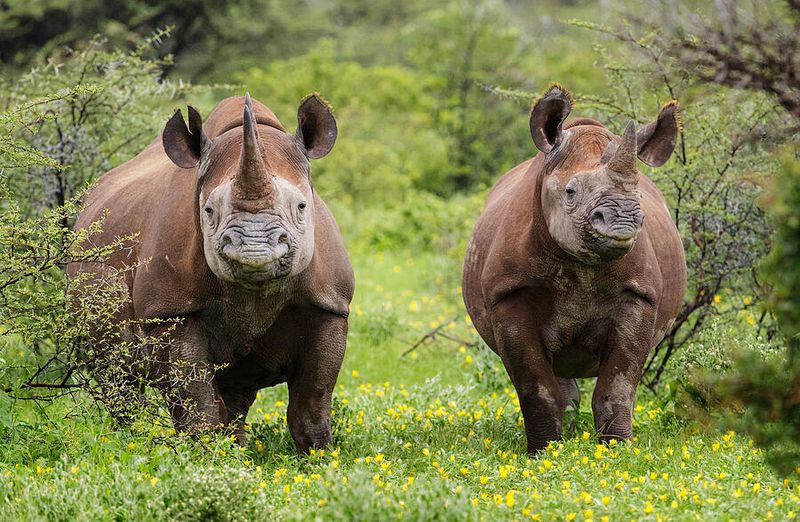
Etosha National Park, with its striking salt pans, offers a unique landscape for wildlife photography. Photographers capture stunning images of wildlife silhouetted against the shimmering white backdrop.
The park’s waterholes attract a variety of species, including rhinos, lions, and antelopes, creating dynamic scenes for those with an eye for drama.
Intriguingly, Etosha means “great white place,” a fitting name for its expansive, reflective salt flats. This park’s combination of stark landscapes and abundant wildlife makes it a fascinating destination for any wildlife photographer.
Svalbard Archipelago, Norway
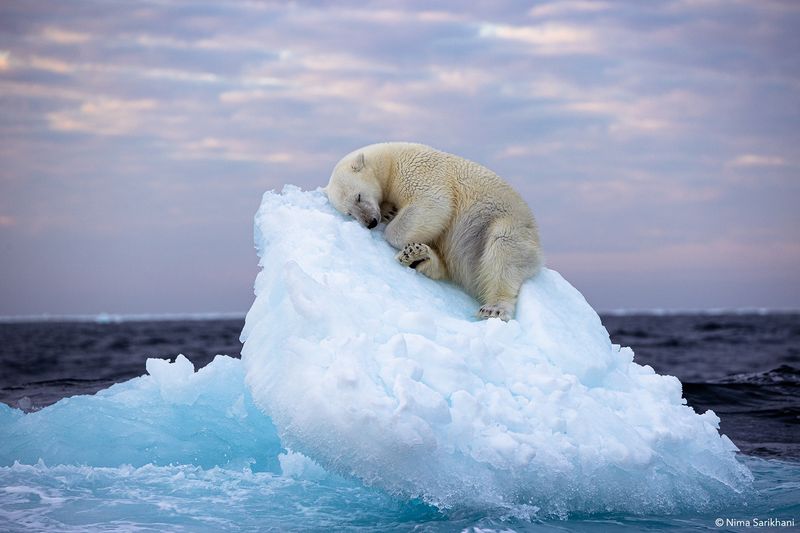
In the vast icy wilderness of the Svalbard Archipelago, polar bears reign supreme. These magnificent creatures navigate the frozen landscapes with a grace that belies their size.
Photographers flock here to capture the raw beauty of the Arctic, where the light dances uniquely across the snow. The islands offer a rare chance to witness polar bears in their natural habitat, a sight that inspires both awe and a sense of responsibility.
Svalbard’s remote location and challenging climate add to the allure, making it a bucket-list destination for any wildlife enthusiast.

